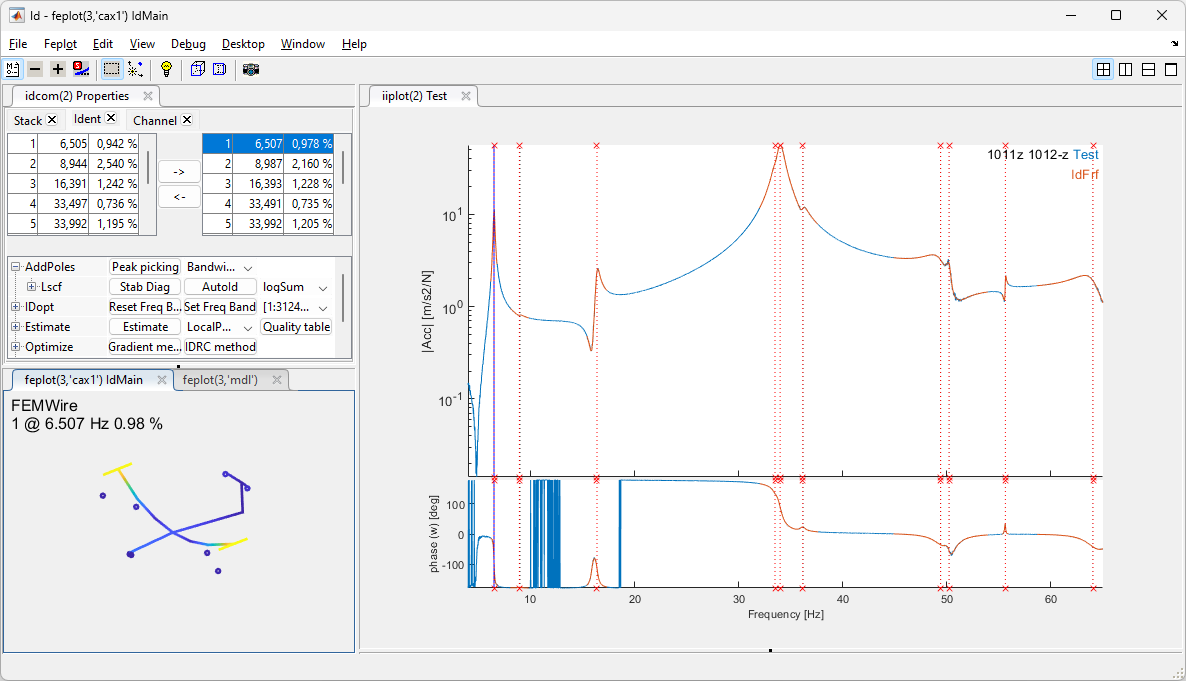Error characterization in modal analysis and model updating. An overview of tools and procedures using the Structural Dynamics Toolbox.
will be presented by Etienne Balmès at the SURVISHNO conference in Lyon on July 8, 2019. This tutorial will mix theoretical considerations and applications using SDT (animations https://www.youtube.com/channel/UCy5PHLw70NqfDDvg24tXJWg , presentation www.sdtools.com/pdf/Vishno19_Tutorial.pdf )

Experimental modal analysis seeks to extract shape and resonance properties from test data. While identification algorithms have been well documented for a long time, at least under the assumption linear behavior, significant differences continue to exist in the implementation details. In particular, non-linear optimization of poles and work by sub-bands is an often overlooked necessity to avoid bias. Once modal data available, the next step is to obtain test/analysis correlation. This requires topology correlation which brings its share of errors, which despite being usually small should be addressed. Global correlation criteria, such as the MAC, are introduced next but for efficient use should be complemented by a set of procedures to localize measurement, topology and correlation errors. While the simple evaluation of correlation is often an industrial objective, the best exploitation of test results is achieved using hybrid approaches combining test with a model, which does not need to be exact to usefully complement the measurements. In particular, expansion methods estimating the full Finite Element responses from data measured at sensors are particularly useful. Energy based criteria on the model side (Minimum Dynamic Residual Expansion or the various variants of Error in Constitutive Relation) have been long known to provide excellent solutions but deployment has been scarce due to an important numerical cost. Simple model reduction strategies are shown to give excellent results for industrial models and open the way for model error localization and updating.
The tutorial is illustrated using standard procedures implemented in the Structural Dynamics Toolbox which provides experimental modal analysis, finite element modeling, model reduction and correlation tools in the MATLAB environment. A main brake squeal application serves a red line and is complemented by illustrations from other industries.
